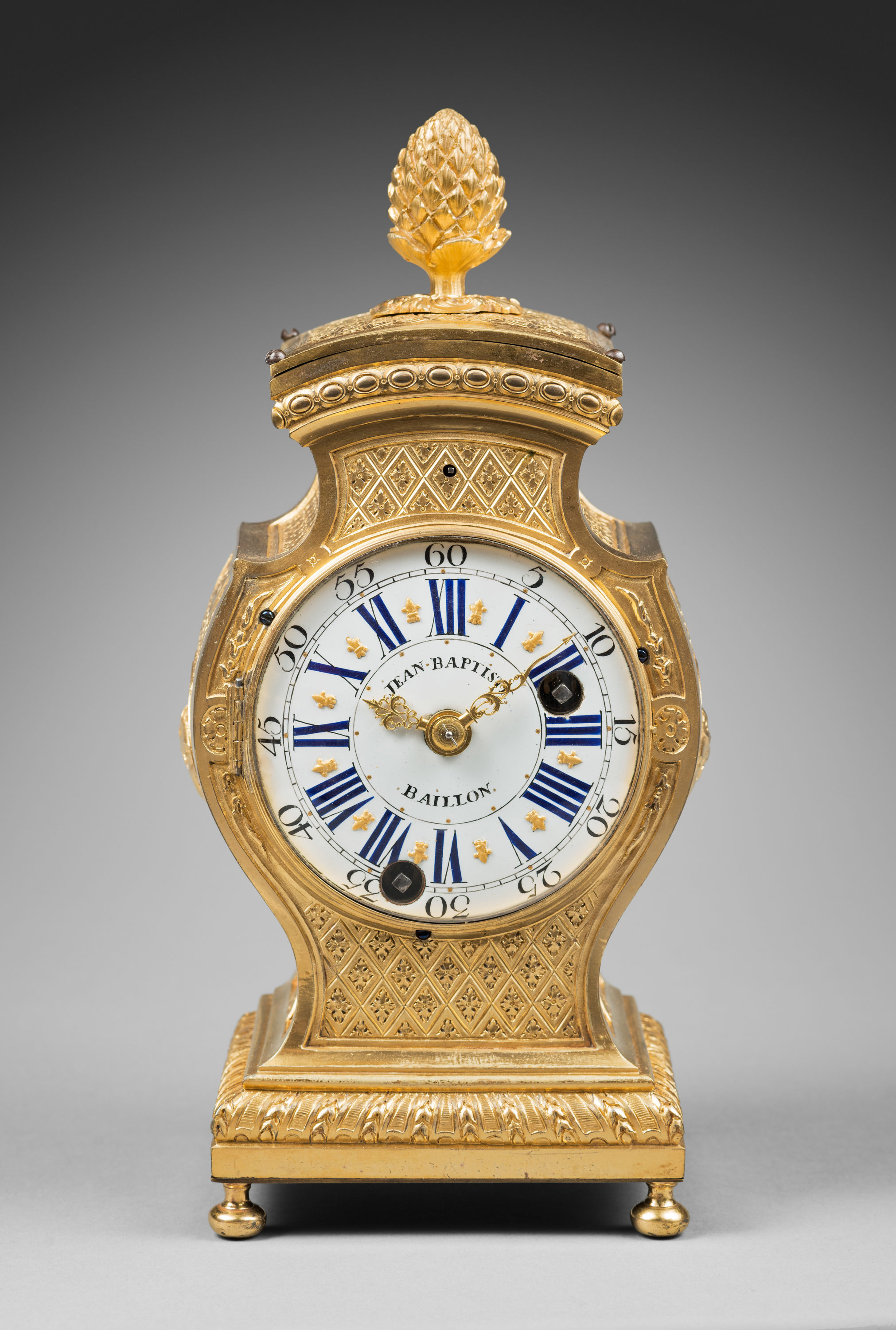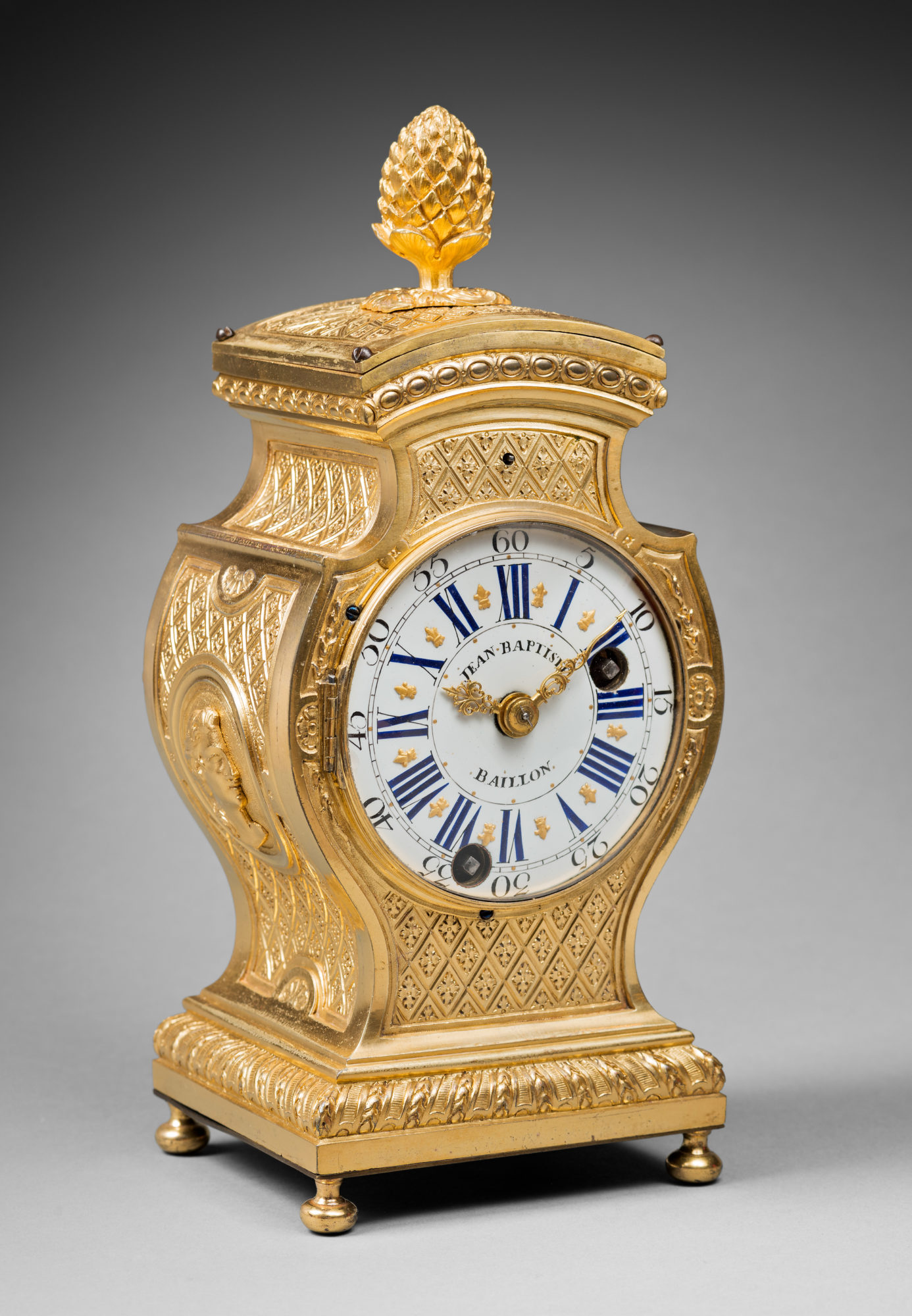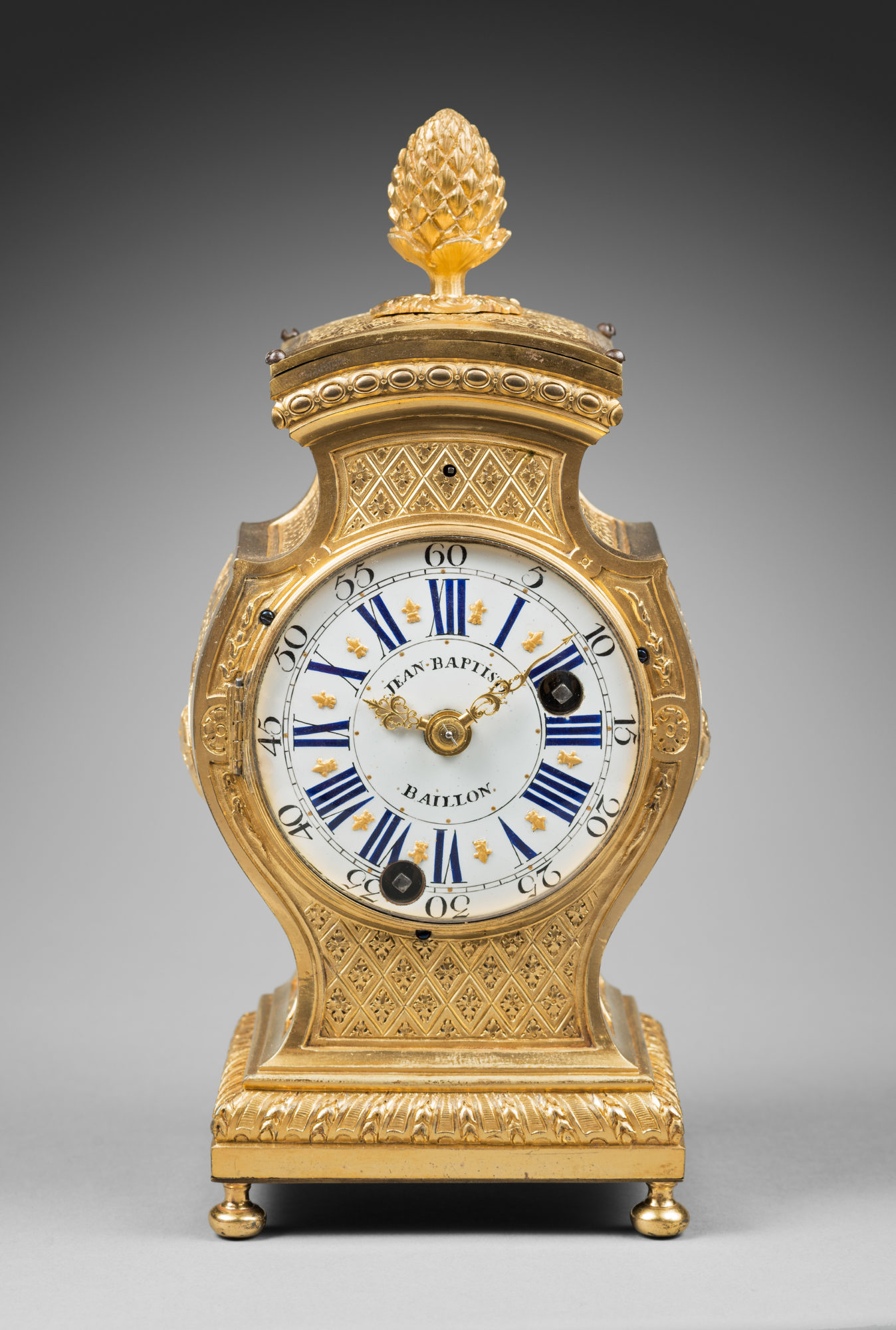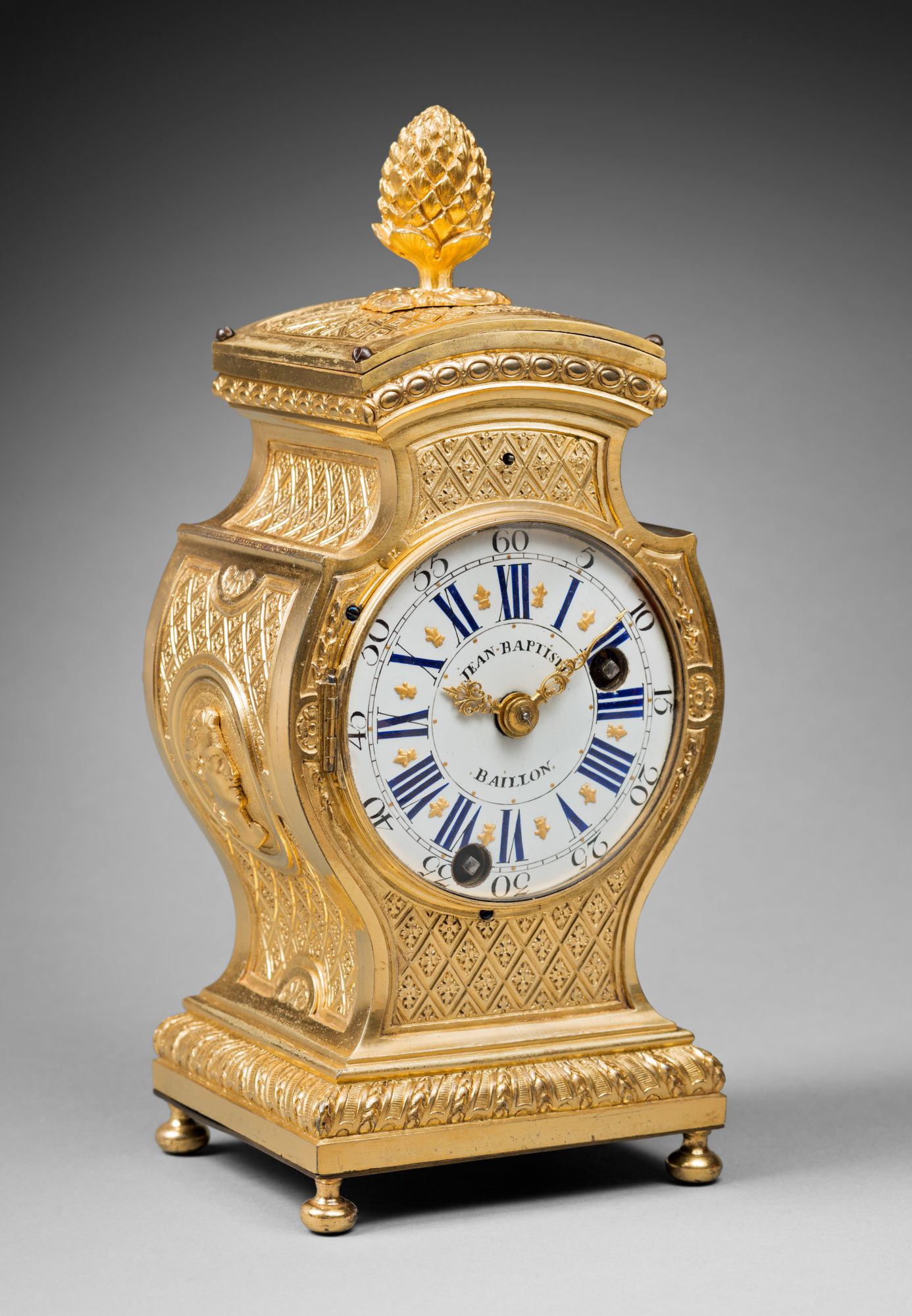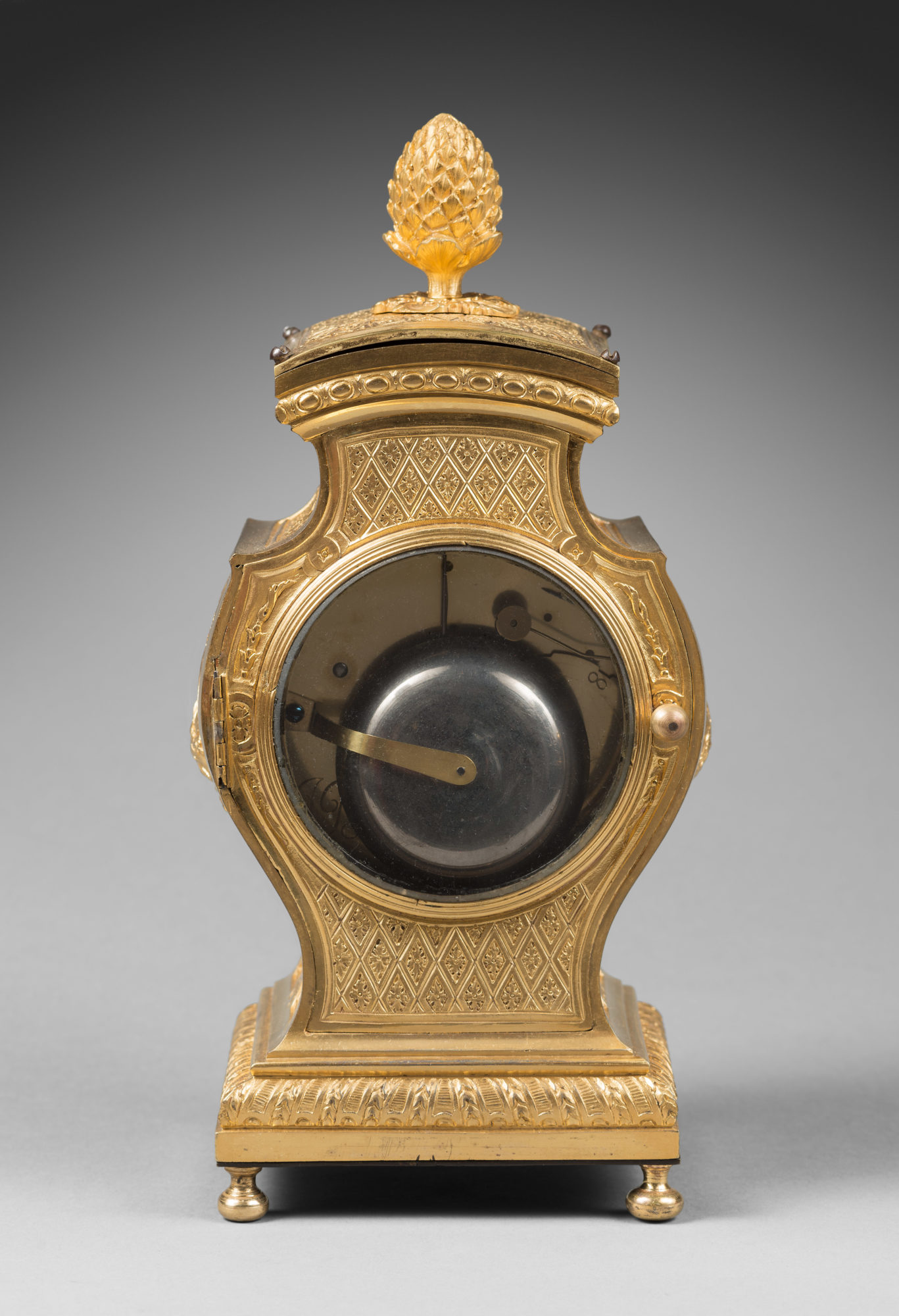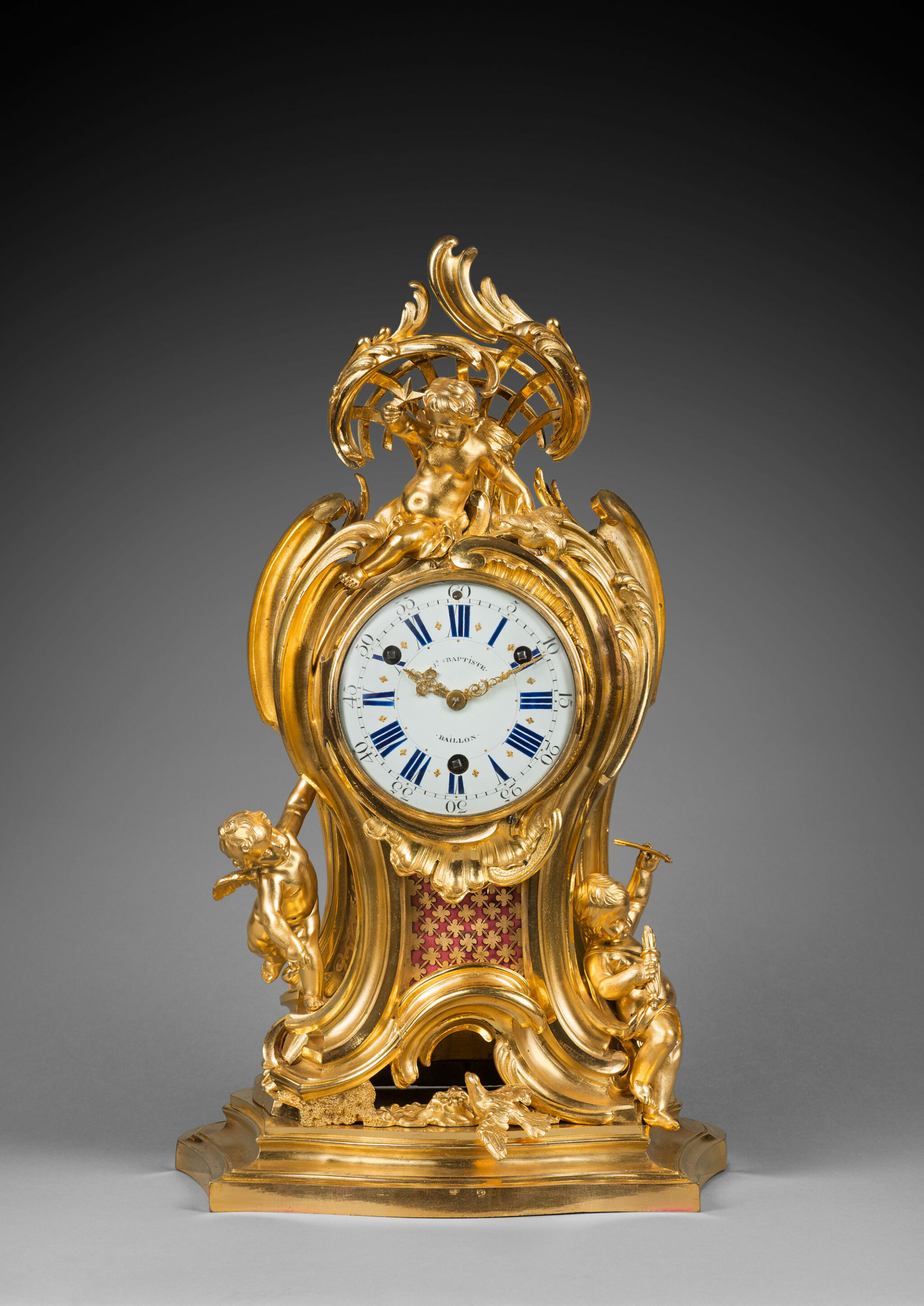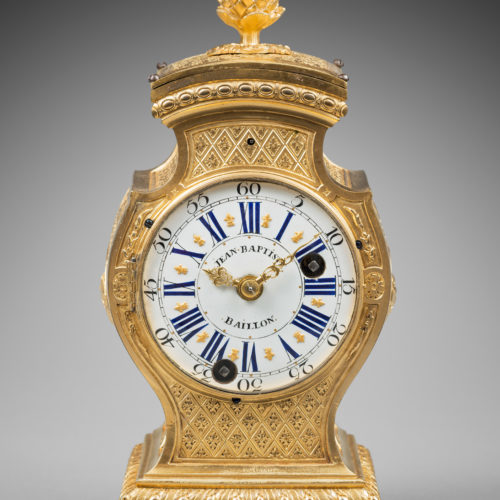Rare Gilt Bronze “tête de poupée” Pendule d’Alcôve with Matte and Burnished Finishing
The round white enamel dial, signed “Jean-Baptiste Baillon”, indicates the Roman numeral hours alternating with applied gold fleur de lys and the Arabic numeral five-minute intervals by means of two chased and pierced gilt bronze hands. The hour- and half hour-striking movement, with signed plate, is housed in a magnificent waisted case of finely chased gilt bronze with matte and burnished finishing. At the top of the clock is a curved plaque with a stylized pinecone finial emerging from a spiral rosette, within a reserve decorated with radiating lozenges centered by flowers. The pediment is adorned with an egg and dart frieze. All the surfaces of the case feature shaped reserves framed by plain bands, which are adorned with latticework centered by quatrefoils. The sides are embellished with framed medallions containing male and female profiles in low relief against matted grounds; stylized shells are placed at the top and bottom. The quadrangular base is adorned with a frieze of alternating wheat sheaves and mille-raie bands. The clock is raised upon four flattened and molded ball feet.
Discover our entire collection of antique mantel clocks for sale online or at the gallery.
The unusual composition of the present rare pendule d’alcôve, of the type known as “tête de poupée”, makes it one of the most elaborate Parisian luxury clocks of its period. Its remarkable design – which is reminiscent of some of the preparatory drawings by Daniel Marot – and the exceptional quality of its chasing and gilding make the clock quite extraordinary. It should be noted that the present clock relates stylistically to works by André-Charles Boulle, one of the most famous and talented artisans of the period. Among the small number of identical clocks, some of which present variations in composition and decoration, one should single out an example with on-demand striking, whose dial is signed “Etienne Lenoir à Paris”, and which has a mobile carrying handle; it is illustrated in G. and A. Wannenes, Les plus belles pendules françaises, De Louis XIV à l’Empire, Editions Polistampa, Florence, 2013, p.72.
Jean-Baptiste III Albert Baillon (? - 1772)
Was one of the most skilled and innovative clockmakers of his day. Baillon achieved almost unprecedented success to become, in the words of F.J. Britten, “the richest watchmaker in Europe”. One of the most important clockmakers of the 18th century, he was no doubt the most famous member of an important horological dynasty. His success was largely due to his ability to organise a vast and thriving private factory in Saint-Germain-en-Laye, which was unique in the history of 18th century horology.
Managed from 1748-57 by Jean Jodin (1715-61) it remained in activity until 1765 when Baillon closed it. Renowned horologist Ferdinand Berthoud was impressed by its scale and the quality of the pieces produced; in 1753 he noted: (Baillon’s) “house is the finest and richest Clock Shop. Diamonds are used not only to decorate his Watches, but even Clocks. He has made some whose cases were small gold boxes, decorated with diamond flowers imitating nature. His house in Saint-Germain is a kind of factory. It is full of Workmen continually labouring for him…for he alone makes a large proportion of the Clocks and Watches [of Paris]”. He supplied the most illustrious clientele, not least the French and Spanish royal family, the Garde-Meuble de la Couronne as well as distinguished members of Court and the cream of Parisian society.
Baillon’s father, Jean-Baptiste II (d. 1757) a Parisian maître and his grandfather, Jean-Baptiste I from Rouen were both clockmakers, as was his own son, Jean-Baptiste IV Baillon (1752 – c.1773). Baillon himself was received as a maître-horloger in 1727. In 1738 he secured his first important appointment as Valet de Chambre-Horloger Ordinaire de la Reine. Sometime before 1748 he was made Premier Valet de Chambre de la Reine and in 1770, Premier Valet de Chambre and Valet de Chambre-Horloger Ordinaire de la Dauphine Marie-Antoinette. By 1738 he was established, appropriately, in the Place Dauphine, and after 1751 in the rue Dauphine.
Baillon used only the finest cases and dials. The latter were supplied by Antoine-Nicolas Martinière and Chaillou while his cases were supplied by Jean-Baptiste Osmond, Balthazar Lieutaud, the Caffiéris, Vandernasse, Edmé Roy and especially Jean-Joseph de Saint-Germain (1719-91).
His success allowed Jean-Baptiste Baillon to amass a huge fortune, valued at the time of his death on April 8, 1772 at 384,000 livres. His collection of fine and decorative arts was auctioned on June 16, 1772, while his remaining stock, valued at 55,970 livres, was offered at sale on February 23, 1773. The sale included 126 finished watches, totalling 31,174 livres and 127 finished watch movements at 8,732 livres. His clocks, with a total value of 14,618 livres, included 86 clocks, 20 clock movements, seven marquetry clock cases, one porcelain clock case and eight bronze cases.
Today one can admire Baillon’s work in some of the world’s most prestigious collections, including the Louvre, the Musée des Arts Décoratifs, the Musée National des Techniques, the Petit Palais and the Jacquemart-André Museum in Paris; Versailles; the Musée Paul Dupuy in Toulouse; the Residenz Bamberg; the Neues Schloss in Bayreuth; the Museum für Kunsthandwerk, Frankfurt; the Residenz in Munich and the Schleissheim Castle. Further museums include the Royal Art and History Museum in Brussels; the Spanish Patrimonio Nacional; the Metropolitan Museum in New York; the Newark Museum; the Walters Art Gallery in Baltimore and Dalmeny House in South Queensferry.
